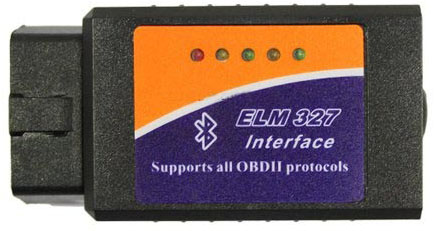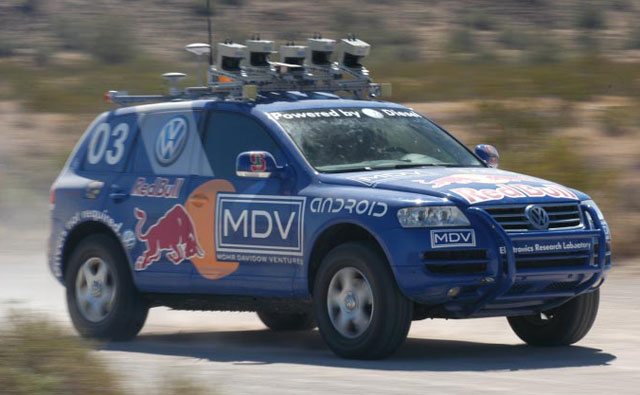Computer in car: from IVI to AI

A modern car has long ceased to be just a means of transportation with a steering wheel, engine and wheels - as it is armed with navigation, communication, computing power of embedded systems (it is a pity that it is not in real speed), it comes close to airplanes. What is the path now going to the autopilot, that the car PC can already now, and what it will learn in the very near future - these are the topics of this message.
IVI: Mechanic, Navigator and Entertainment Center
The digital subsystem of the car was originally designed as a set of self-diagnostic equipment of the machine in real time; in one form or another, it has existed for quite some time. The first auto digital interfaces were intended for more masters of proprietary services (which didn’t exclude, of course, the very interesting hands of curious people interfering with them), but the movement went towards open standards, and now (more precisely, since 1996 in America and since 2001 Years in Europe) all cars must, according to the law, comply with the OBD II (On-board diagnostics) standard, which allows third-party interface compatible (but not error codes) solutions to be used to diagnose the basic engine parameters. More sophisticated settings, such as, for example, transmission and transmission operating modes, as well as any change in vehicle parameters, remain the prerogative of services.
The same ELM327, and even with Bluetooth
The most popular means of connecting to the OBD II bus are adapters based on the ELM327 chip, having an RS-232 interface (emulated via USB). Thus, diagnostic data can be fed to the input of specialized software, of which there is a great variety for a large number of platforms. Unfortunately, there are still even new cars that do not want to work correctly through OBD. Well, as usual, Russian cars became OBD-compatible much later than their import counterparts. It is good that at least they have become.
The on-board computer itself, which receives diagnostic information, can be of two types: either a “boxed” solution adapted to this model of car (usually inserted into the compartment of the radio tape recorder) or a standard, albeit very small PC, installed in any suitable place.
')

CarPC format 2DIN with Chinese Windows XP on board
Typically, these PCs are assembled based on mini- or nano-ITX motherboards and low-power processors, running under Windows or MeeGo. In the ecosystem of Intel solutions, embedded computers in cars are called IVI - In-Vehicle Infotainment (equipped with Intel Atom processors). The word Infotainment = Information + Entertainment indicates that the PC in the car can not only collect diagnostic information, but also serve as an entertainment center, as well as perform a number of specific mobile functions:
- Provide a platform for navigation services;
- Distribute mobile Internet in the car via Wi-Fi;
- Serve as a wireless network storage;
- Recognize voice commands;
- Manage auto systems such as parktronics, cameras of various kinds, etc.
Intel IVI systems are already used by the world's largest automakers, such as Toyota, Nissan, Hyundai and many others.

IVI system schematic diagram
So, as we can see, even now a computer in a car can significantly ease the work of the driver and increase traffic safety. What will happen tomorrow?
ADAS: Active Security
Monitoring, navigation, entertainment - all this is good and will not go anywhere, but now refers more to the day of the past. Modern developments in the automotive industry provide active intervention of electronics in the driving process to the extent that its capabilities allow. The whole set of these tools is called Advanced driver assistance systems - that is, we are already talking about not just informing, but real help by action. Let's get acquainted with the most interesting ADAS systems.- Autonomous cruise control slows down or accelerates the car, depending on the behavior of the car in front. The distance is measured by a radar or a laser.
- Adaptive lighting system changes the geometry of the light beam of the car headlights, depending on the weather and traffic situation.
- An intelligent parking system can squeeze a car into a parking space allotted to it with minimal driver assistance.
- The traffic sign recognition system responds to a number of particularly important traffic signs - “speed limit”, “stop”, etc.
- The system for determining drowsiness does not allow the driver to fall asleep at the wheel - statistics states that at least 20% of accidents occur due to fatigue

Autonomous cruise monitor
The list of systems can be continued for a very long time - everyone can read it personally . It is obvious, however, that the more intelligent the security system is, the more information it needs to process and the more serious requirements are placed on its hardware. Now, each car is equipped with its own set of systems, implemented, as a rule, independently of each other, which is ideologically incorrect, since it leads to the duplication of sensors and processing means. From the concept of "mounted" systems, you need to go to a single computer center of the car, similar to CarPC, only with an expanded set of functions (protecting it, where necessary, with the necessary redundancy). Most likely, the filling of such a center should be more serious, but there is no doubt that Intel will be able to provide the processor with the necessary performance for this purpose.
AI: the co-pilot in your car
Will artificial intelligence (AI) ever completely replace a person driving a car? While definitely hard to say. In aviation, the autopilot has been used for more than 50 years, but it has not yet occurred to me to remove the crew of pilots from the cockpit. Automation can control the aircraft at a high altitude and even land it (with the availability of appropriate equipment at the airport), but when piloting in difficult, unusual situations, it is lost - you need human help. Needless to say, when driving a car, such situations are no less.Nevertheless, it is necessary to approach the ideal, because every step along this path can be more or less embodied in real machine models. One of the loudest experiments in this field for several years now has been conducted by Google. To date, more than a dozen unmanned Google cars are driving the US roads (although one person is still sitting in them, for control). The car focuses on the road using Google Street View data, numerous video cameras and a LIDAR space laser scanner. The total mileage of the cars is now almost 500,000 km, while it is claimed that Google’s cars were in just one accident and not due to AI.
Google Movement on the racetrack and city streets
In addition to purely technical issues, Google has to deal with both organizational and legal issues - well, I don’t have to take any experience in this. Undoubted success is evident: Google managed to register the first unmanned vehicle as a vehicle and get a special sample registration number on it - in red, with the depicted infinity symbol.

Stanley University Stanley Car, DARPA Grand Challenge 2005 winner
Naturally, unmanned cars are developed not only in Google, but also in many other commercial and scientific institutions engaged in matters of artificial intelligence. For a good dozen years, competitions of cars driven by AI have been regularly held , including in Russia . The first results were not very impressive, but now artificial intelligence has become significantly wiser - you can barely distinguish it from the present!
What will be the role of the computer in the vehicle? There is no doubt that the most simple transport to manage - metro and railway trains - will be fully robotized in the near future. As for cars, even in Google itself they cannot definitely say when their unmanned cars will become a commercial project: while everything is too expensive, too complicated, too risky. We can only wait, but Intel - to continue to create more and more advanced mobile solutions.
Source: https://habr.com/ru/post/151321/
All Articles